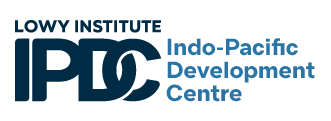In early May, donor governments are expected to unveil new funding commitments for the grant-financing window of the Asian Development Bank (ADB) – the Asian Development Fund. Dubbed ADF 14 and covering the period 2025–2028, it will be an important test of the commitment to multilateralism and development effectiveness in the Pacific.
Unlike the ADB’s lending arm, which runs off the bank’s capital base, the Asian Development Fund requires regular donor replenishments to support its role in providing aid grants to the poorest and most vulnerable countries in the Asia-Pacific. Nine out of 13 countries currently able to access the fund are Pacific Islands countries. The Lowy Institute’s Pacific Aid Map shows that the ADB has been the sixth-largest source of grants from traditional donors to these countries, providing more than half a billion dollars since 2012 in inflation-adjusted terms.
However, at a time when donor governments are focused on geostrategic competition with China and cost-of-living pressures at home, technocratic multilateral development assistance is out of fashion and a successful outcome cannot be assumed.
If multilateralism and development still matter, though, then the Asian Development Fund is worthy of a generous replenishment. Retaining a strong anchor of development-oriented assistance is vital to ensuring sustained development progress in the region and insulating this, to a degree, from the vagaries of intensifying geopolitics.
Japan is the largest donor to the fund, providing almost US$1 billion out of the US$4 billion total for the last replenishment. Japan will likely continue to support the fund generously, given its leadership role at the bank. Australia is the second-largest donor at US$290 million in the last round and should have a strong interest in continued significant support given its focus on the Pacific. For donors from beyond the region (i.e. Europe and the United States), contributing to the fund provides a way of overcoming their own more limited on-the-ground presence and avoiding excessive aid fragmentation. The ADB itself is also a major contributor via profits transferred from its lending arm and donors will likely be looking for a significant contribution given this was one important consideration behind earlier reforms to optimise the bank’s financial structure.
The Asian Development Fund is strongly aligned with key development priorities in the Pacific. Figure 1 shows the focus of ADB grants on four key priorities – infrastructure, budget support, climate change, and gender equality – and compares this to the average for traditional donors.
The ADB compares strongly across the board. Infrastructure is a key development priority but also a geostrategic priority for traditional donors that want to ensure the region has attractive financing alternatives to China. Almost half of all ADB grants go to infrastructure. The ADB also plays an important role in providing budget support to Pacific governments, which is crucial for supporting policy reform and post-Covid recovery given high debt. On gender, the ADB far exceeds the donor average, especially in integrating significant gender objectives across its projects.
However, it is when it comes to climate change, the top priority for the Pacific, that the ADB really demonstrates its value. While its overall focus on climate change is similar to the average, this understates the ADB’s contribution. Relative to other donors, ADB grants are especially focused on projects where climate change is the “principal” objective – e.g. coastal protection or disaster early warning systems – rather than an integrated “significant” objective within a broader project focused on other priorities – e.g. health or education (noting that the entire value of climate-significant projects counts as climate-related aid).
Focusing only on projects with climate change as the principal objective, the ADB is a leading source of Pacific climate aid (Figure 2). Since the Paris Agreement was signed in 2015, the ADB has been the third-largest provider of dedicated climate aid to the most vulnerable Pacific Islands countries. The only institutions that have provided more are specialised global climate funds – the Green Climate Fund (GCF) and Climate Investment Funds. And much of the time, it is the ADB that has been the implementing partner for the GCF – highlighting the significant institutional capabilities that the ADB brings in the region.
For donors from outside the region, the Asian Development Fund provides a key mechanism for pooling their efforts into a more effective source of development support – avoiding inefficient aid fragmentation and overcoming their limited on-the-ground presence.
To see this, Figure 3 focuses on grants to eligible Pacific Islands, setting aside the region’s major bilateral donors – Australia, Japan, and New Zealand, as well as concentrated US support to its Compact States. This makes clear the important roles played by the ADB and World Bank as sources of multilateral aid. The ADB provides three-quarters as much aid as all other multilateral institutions combined, one-and-a-half times as much as all EU institutions, and far more than all smaller bilateral donors combined or the United States outside the Compact States.
A final key role played by the ADB is in providing countercyclical financing, which is crucial given the Pacific Islands are especially vulnerable to big external shocks. This was on display during the Covid-19 pandemic. The ADB responded the most forcefully among donors, tripling its financing in 2020 to become the third-largest source of grants to eligible Pacific Islands that year, overtaking the World Bank and Japan. By comparison, other major donors including Australia and New Zealand did not respond as fast. The United States responded quickly but only in its Compact States. Aside from the World Bank, other multilateral institutions and smaller bilateral donors did not provide a significant response. Nonetheless, ADB support quickly fell back after 2020 – highlighting that the sustainability of ADB grant operations ultimately relies on regular replenishments from donor governments.
Overall, what is clear is that the Asian Development Fund has allowed the ADB to serve as a vital source of multilateral and depoliticised support for the most vulnerable Pacific Islands countries, targeting their most pressing needs, and helping reduce aid fragmentation. Donors should prioritise a strong replenishment.


